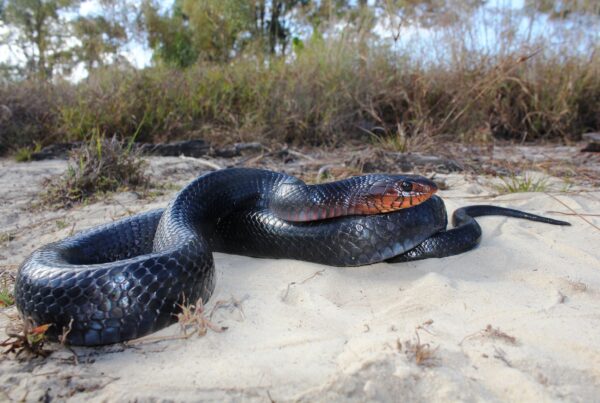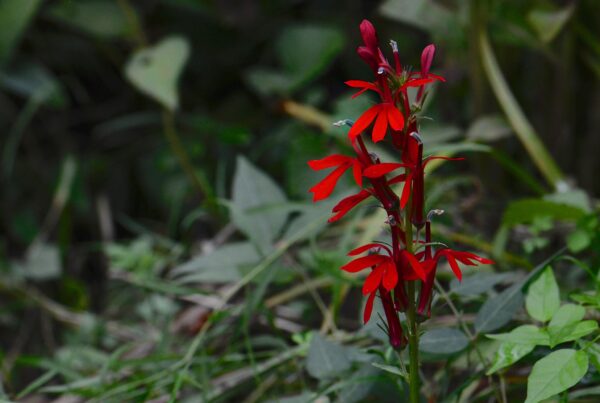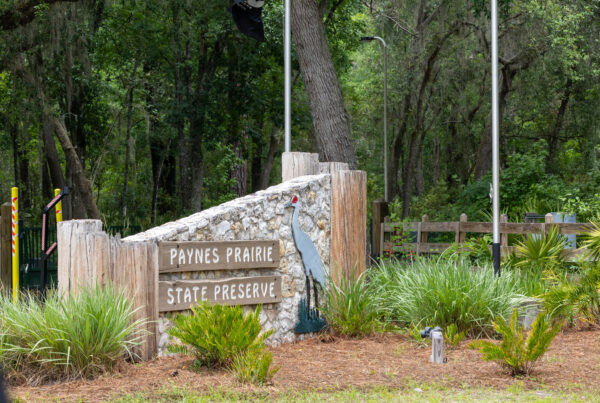Herbs are a great addition to flower or vegetable gardens—or both! They’re easy to grow, thrive in containers, and provide fresh, flavorful ingredients just steps from your kitchen. As a bonus, adding herbs to your garden can also support an abundance of pollinators.
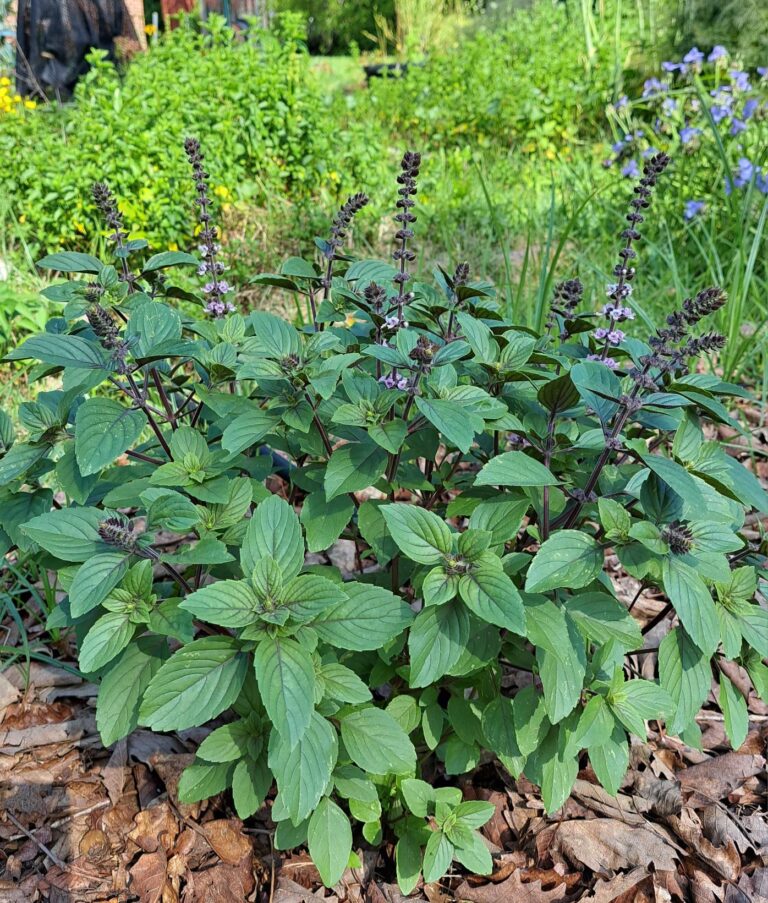
African blue basil. Photo by Marney Richards
Familiar herbs like basil, oregano, sage, parsley, mint, Thai basil, African blue basil, chives, and others can flower profusely. Pollinators, especially bees, will gather nectar and pollen from the flowers. Flying takes an enormous amount of energy! Clusters of herb flowers help pollinators forage more efficiently by providing easy access to food sources.
A Pinch for You, a Flower for Them
Growing herbs to share with pollinators might require a little adjustment. Gardeners often pinch off flower buds to maintain the flavor of herbs. The solution for pollinator gardens? Plant plenty of extra and let half of the herbs flower. The plants will get taller, with abundant stalks and flowers, and might need a little more space. If you want your wildlife-friendly garden to look a little tidier, keeping the border trimmed can help maintain a well-kept appearance. Adding a garden sign can let neighbors know you are planting a refuge for pollinators, birds, and other small wildlife, which might spark good conversations on the importance of supporting biodiversity!
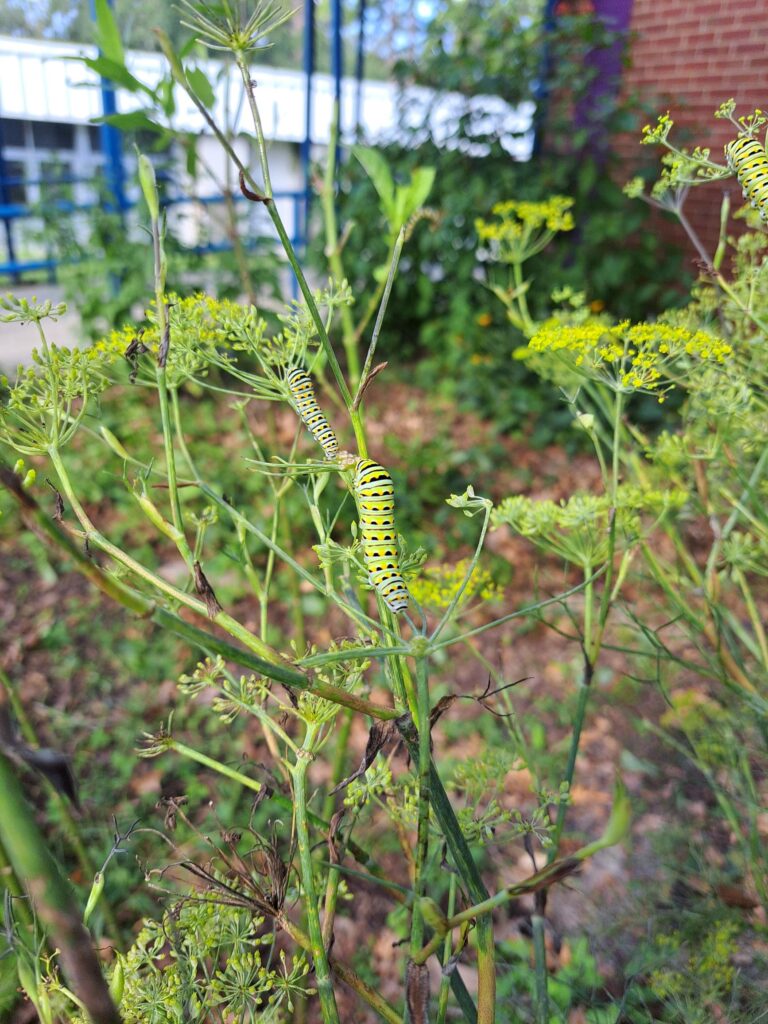
Caterpillar on parsley. Photo by Marney Richards
Herbs in the carrot family, such as dill, parsley, fennel and cilantro, are larval host plants for the eastern black swallowtail butterfly, which ranges throughout Florida. Adult females lay tiny eggs on these plants and when hungry caterpillars emerge, they will eat the leaves and stems, sometimes down to the stalks.
Just be sure to plant enough to share with pollinators. If you love having lots of parsley for your favorite dishes, consider also growing bronze fennel nearby. The swallowtails often choose it over parsley, and it will usually regrow after caterpillars consume much of the plant.
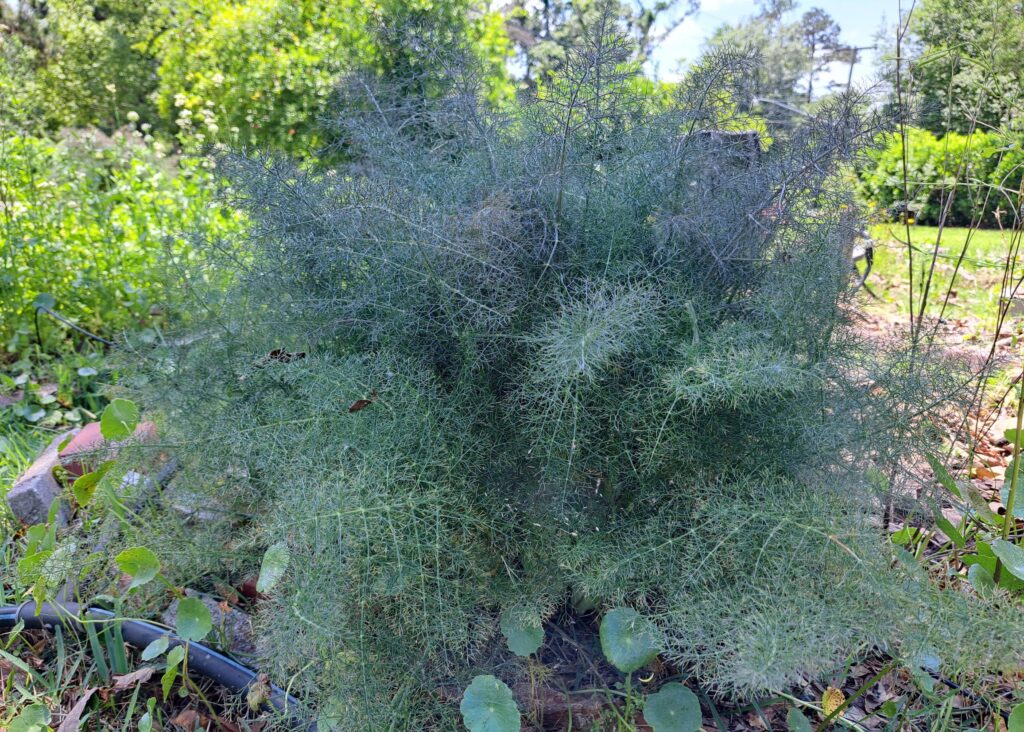
Bronze fennel. Photo by Marney Richards
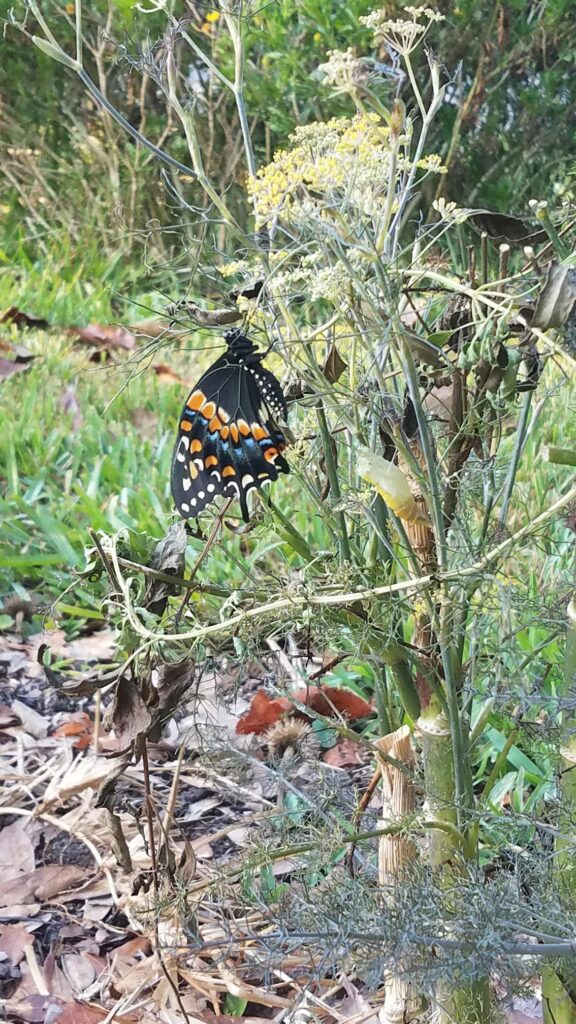
Newly emerged swallowtail on fennel. Photo by Marney Richards
Adult swallowtail butterflies might stay on a plant in your garden when it’s time to form their chrysalis. With luck, the whole life cycle, from egg to butterfly, could unfold where you can observe this amazing process.
Keeping Your Garden Healthy
To keep your garden space healthy and pollinator–friendly, skip pesticides whenever possible. Even common organic pesticides like Bt (Bacillis thuringiensis) can harm butterfly caterpillars. An approach to managing plant pests, known as integrated pest management, or IPM, focuses primarily on preventing and managing problems. Keeping plants healthy is the best defense against pests. Choosing the right plants for the space, using the appropriate amount of water, and fertilizing only as needed will help keep plants strong and at their best.
Gardens with a variety of flowering plants, including herbs, will attract beneficial insects that help manage pests. You can learn to recognize these insects and let them work hard for you.
Our natural ecosystems rely on the biodiversity of pollinators. Growing herbs, along with native flowering plants, is a great way to help support this complex web where everything is connected. With a few mindful choices, your garden can be a source of beauty, nourishment, and biodiversity all season long.



